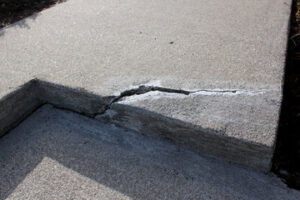When many homeowners think of insulation they picture pink fluffy material that resides within their walls. In reality, thermal insulation is a barrier that restricts heat flow and helps keep your home warm in winter and cool in summer.

Whether you are building a new home or remodeling your current one, there are many options for Perth Insulation. The key is to understand what type works best for you and how it can save you money.
Insulation is a material that prevents the transfer of heat from one area to another. It is often used in residential homes and commercial buildings to slow down the flow of heat through walls, floors, doors, and ceilings. Keeping your home properly insulated will decrease the amount of energy that it takes to heat and cool your house.
Insulation can be made from a variety of materials including fiberglass, cellulose, and spray foam. The effectiveness of insulation is rated using R-Value, which measures the thermal resistance of the material. The higher the R-Value, the better the insulating ability of the material.
Air leakage is a significant problem for many homeowners, and can account for up to 40 percent of energy loss in the average home. This loss of conditioned air leads to higher energy bills and a less comfortable living environment. Adding insulation and sealing gaps around doors, windows, and electrical outlets can dramatically lower your energy bills.
The most common types of insulation are fiberglass batts, cellulose, and spray foam insulation. Fiberglass is available in rolls or sheets and can be cut to size and placed between studs, joists, beams, and walls. Cellulose is a blown-in material that can be installed in closed existing wall cavities or open new wall cavities. Spray foam can be installed in a variety of ways depending on the application, either in an open or closed cavity.
While fiberglass and cellulose are effective forms of insulation, spray foam is considered the most efficient. It can be sprayed into an open cavity such as attics, crawl spaces, and rim joists in a liquid state and expand to fill the space. This type of insulation is ideal for new construction and renovation projects.
Foam insulation can also be sprayed into an attic in a closed cavity such as a pole barn or a finished attic. This is typically a two person job, as one person feeds the cellulose into the machine while the other blows it into the attic. This type of insulation is known as a blown-in or loose-fill insulation.
R-Value
R-value is the number that appears on insulation specification sheets and indicates how well a material resists heat flow. The higher the R-value, the greater the insulating power. R-values are based on tests performed in an airtight, zero weather condition capsule that measure thermal resistance, or the ability to prevent a material from transmitting heat.
In order to determine a material’s R-value, a special testing machine measures how long it takes for a hot plate to cool when placed on the surface of the insulation. The resulting measurement is then expressed in units of square foot degree Fahrenheit hours per British thermal unit (BTU). The higher the R-value, the better the insulation.
The R-value does not account for other factors that influence a building’s energy efficiency, such as air infiltration. The way that insulation is installed also influences its performance. For example, stuffing a cellulose or fiberglass batt that is rated for 5 inches into a wall cavity that is only 4 inches thick will reduce its R-value significantly.
A building’s R-value requirements are determined by climate and specific energy efficiency goals. Generally, the more a home is insulated, the lower its energy costs will be.
If a home is located in a warm climate, an R-value between R-30 to R-49 will be recommended. This will help reduce energy bills, make the living spaces more comfortable, and protect the structure from water and wind damage.
As an inspector, you should be familiar with R-values and the role they play in achieving an efficient energy rating for a home. In fact, R-value is a key component when working toward a 7 Star NatHERS rating.
However, there is much more to consider when working towards an energy efficient home than simply meeting R-value requirements. A good insulation contractor should be able to provide an R-value that will work in conjunction with the rest of the building envelope and mechanical systems to provide a truly energy-efficient home. To do this, a professional should be familiar with the different materials, insulation types, and building assemblies that can create an air seal and achieve an R-value that will work best in each unique situation.
Condensation
Insulation helps reduce condensation and prevents moisture from affecting a building’s air quality. If there are areas of your home or office where condensation occurs frequently, this could be a sign that the insulation is not doing its job properly and it needs to be replaced or updated. Condensation is often a result of high humidity levels in an area.
Adding insulation to your walls, attic, ceilings and floors is an excellent way to help lower your energy costs. It also helps to reduce greenhouse gas emissions and other pollutants.
Different types of insulation can be installed in a variety of ways, including spray foam and fiberglass. Spray foam is sprayed into wall cavities and attics in a liquid form, which expands as it settles to provide a blanket of insulation throughout the entire space. It is an ideal choice for new construction or retrofits and can be installed in existing homes.
Fiberglass is available in batts that are cut to fit the walls or floor and inserted between studs, joists, beams or the attic. It can be blown into a wall cavity with an air compressor or pushed into the area with a hand-held gun. It is less prone to exterior damage and mold, but it can be damaged by moisture or insects.
Vapor Barriers
Vapor barriers are a critical component of an effective insulation system. Also known as vapor retarders, they are plastic or foil sheets that prevent moisture transfer from a building’s interior to the exterior. They help to control condensation, which can cause damage to insulation and other building materials. Vapor barrier types vary, and they are usually either vapor permeable or impermeable. The type required for your home or commercial structure depends on your climate zone and the construction method of the building.
Moisture-related issues can affect your home’s comfort, increase energy bills and lead to rot or mold. They can also impact the durability and longevity of your insulation. In some cases, moisture problems can even compromise the integrity of your home’s structure and require expensive repairs or replacements. Vapor barriers help to prevent moisture from reaching vulnerable building materials like wood studs and beams. They are a great preventive measure for avoiding costly moisture-related issues in the future.
In addition to keeping your home warm and dry, a properly installed vapor barrier can significantly reduce your heating and cooling bills. Moisture-related issues make your heater and air conditioner work harder, which increases your energy bills. Vapor barriers can reduce this cost by preventing moisture from moving through your building’s insulation.
While there is some debate over the need for vapor barriers, they are an important part of any insulation system. They are especially useful in colder climates, where the risk of condensation is greater. It’s important to follow the recommendations and requirements of your local and provincial/state building codes when installing a vapor barrier. It’s also essential to ensure that the barrier is correctly placed and sealed, as improper installation can allow moisture to penetrate the insulation and cause damage. For instance, a vapor barrier installed on the wrong side of a wall assembly can trap moisture and encourage rot or mold. In such cases, it’s important to consult with a professional installer for advice. They will be able to recommend the best course of action for your situation. In many cases, a vapor barrier will need to be combined with an air barrier, which is designed to stop the bulk movement of air through gaps and cracks.


